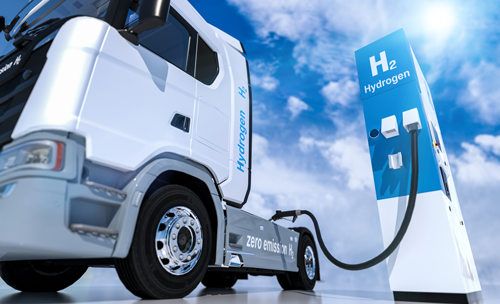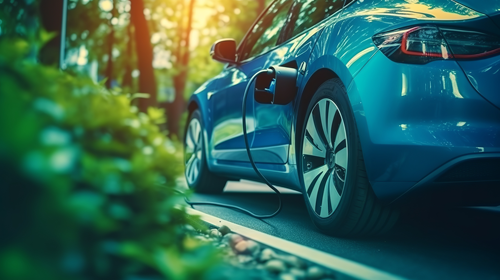Reducing transport emissions with Zero Emission Vehicles
Transport is a major source of greenhouse gas emissions, and is expected to be Australia’s largest source by 2030. Currently, transport is responsible for 19% of Australia’s emissions, with passenger cars and light commercial vehicles alone contributing to over 10%. It is therefore critical to lower transport emissions to ensure that Australia, and the rest of the world, is able to achieve its greenhouse gas emission reduction targets.
Increasing the adoption of environmentally friendly vehicles that produce less emissions is one action that can be taken to help meet these targets.

What are Environmentally Friendly Vehicles?
Environmentally friendly vehicles use less fuel and produce low or no emissions. These include:
- fuel efficient vehicles, which can be driven greater distances using less fuel
- electric vehicles, which are powered by electricity rather than liquid fuels
- hybrid vehicles, which are powered by a combination of liquid fuel and electricity
- hydrogen vehicles, which are powered by a hydrogen fuel cell that generates electricity.
Electric-only and hydrogen vehicles are known as zero emissions vehicles (ZEVs), as they do not use petroleum fuels and therefore do not emit greenhouse gas emissions from the tailpipe. This makes them an ideal option for those seeking an environmentally friendly vehicle. Battery electric vehicles and hybrid electric vehicles are common in Australia, however hydrogen vehicles are not yet available for everyday use.

Benefits of Zero Emissions Vehicles
The use of ZEVs presents various benefits that can help individuals and businesses minimise their impact on the environment and reduce costs:
- Lower emissions: ZEVs produce less emissions, and emissions can be further reduced if electric vehicles are charged using renewable energy. The increased adoption of these vehicles will therefore significantly reduce greenhouse gas emissions from transport.
- Cheaper running and maintenance costs: The cost to power ZEVs is significantly less than fuelling petrol and diesel vehicles. They also have fewer parts, which reduces maintenance and servicing costs and improves reliability.
- Better air quality: The lower emissions produced by ZEVs will help reduce air pollution and health issues caused by poor air quality.
- Reduced noise pollution: ZEVs are quieter than petrol and diesel vehicles, and therefore would reduce noise pollution from traffic.
- Fuel security: ZEVs can improve fuel security by relying on electricity generated in Australia, rather than international imports of liquid fuels.

Government strategies and actions
In Australia, recent consultation has indicated support for a transition to ZEVs if action is taken to improve cost, choice, availability of charging and accessibility. State and federal governments have recognised these concerns from consumers, as well as the benefits of ZEVs, and have published strategies outlining actions that will be taken to support the uptake of such vehicles. These actions include:
- establishing more ZEV charging infrastructure for the public, businesses and households
- implementing financial incentives for individuals and businesses purchasing ZEVs, such as rebates, subsidies, and discounts on registration and stamp duty
- assisting businesses with transitioning their fleets to ZEVs.

Jurisdiction specific actions
The Federal Government is undertaking various actions to support the adoption of ZEVs, including the release of the National Electric Vehicle Strategy. The Green Vehicle Guide is also available to help consumers choose an environmentally friendly vehicle. For information on actions being undertaken in your state or territory, see the links below:
- Australian Capital Territory: Climate Choices Webpage: Cars and Vehicles
- New South Wales: NSW Government Webpage: NSW Government’s Electric Vehicle Strategy
- Northern Territory: Department of Infrastructure, Planning and Logistics Webpage: Electric Vehicle Strategy and Implementation Plan
- Queensland: Queensland Government Webpage: Electric Vehicles
- South Australia: Department for Energy and Mining Webpage: Electric Vehicles
- Tasmania: Renewables, Climate and Future Industries Tasmania Webpage: Electric Vehicles
- Victoria: Department of Energy, Environment and Climate Action Webpage: Zero Emissions Vehicles
- Western Australia: Department of Water and Environmental Regulation Webpage: Electric Vehicle Strategy

Sources:
- Australian Government Webpage: Green Vehicle Guide
- Australian Renewable Energy Agency Webpage: Electric Vehicles
- Department of Climate Change, Energy, the Environment and Water Publication: National Electric Vehicle Strategy
- Department of Energy, Environment and Climate Action Webpage: Zero Emissions Vehicles
- NSW Climate and Energy Action Webpage: Electric Vehicles for Business
- Queensland Government Webpage: Benefits of Zero Emission Electric Vehicles
- Transport for NSW Webpage: Why Buy an Electric Vehicle?